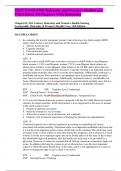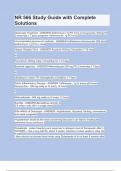Exam (elaborations)
TEST BANK FOR Maternity and Women's HealthCare 13th Edition All Chapters With Rationales
- Course
- Institution
TEST BANK FOR Maternity and Women's HealthCare 13th Edition All Chapters With Rationales Chapter 01: 21st Century Maternity and Women’s Health Nursing Lowdermilk: Maternity & Women’s Health Care, 12th Edition MULTIPLE CHOICE 1. In evaluating the level of a pregnant woman’s risk of having...
[Show more]




